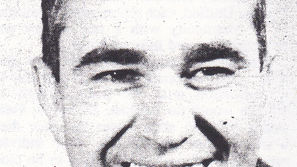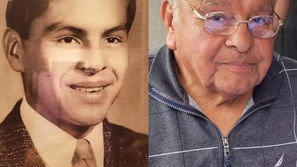Irish Week and Gaelic logic
- Jim Glynn
- Mar 12, 2017
- 4 min read
Welcome to Irish Week, the time of year when people pretend to enjoy eating boiled meat and soggy cabbage, as well as hurling. Not the kind of hurling that follows the consumption of ruined beef and vegetables, but rather the sport which resembles the coupling of lacrosse with field hockey. The ancient sport supposedly has prehistoric origins, with player contact that one might expect of Neanderthal wrestling but rules as complex as the user’s manual for an iPhone.
The first significant hurling contest occurred in County Mayo in 1272 BC when the Tuatha De Danann invaded the Fir Bolg. (Don’t ask me what that means because deciphering Gaelic — the old tongue of Ireland — is as daunting as trying to unravel accounts of Irish history.) Anyway, it was decided that the end result of the invasion would be determined by a hurling match between 27 of the best players from each side. Camán (sticks) flashed and sliotar (the ball) flew, and — according to the Northern Gaels Hurling Club — “both sides fought a bloody match and… when they were bruised and broken the match finished with the Fir Bolg victorious who then slew the Tuatha De Danann.”
Oral history, tall tales
The story of the Fir Bolg and Tuatha De Danann, of course, would have been passed down by oral historians and is somewhat suspect because the events precede the written history of Europe. And, the Irish have been known for embellishment, as well as exaggeration. Sometimes, events are simply recounted to accommodate existing beliefs. For example, my great-grandmother, who was from County Clare in Ireland, told me the story of her brother John. John had been drinking at a local pub one evening and was chased home by a banshee, a female spirit who is the harbinger of death.
As John burst through the door and leaned his weight against it, he told the family that he heard the keening (traditionally associated with banshees) soon after he set foot on the farm. He said that the moaning got louder as he jumped across a culvert, and it lessened a bit as he approached the farmhouse. But, “Ooooh,” he recounted, “it was blood-curdling, it was.”
The following morning, her father passed out rifles to her brothers, and the armed party went off in search of any evil creatures that inhabited the area. As they approached the culvert, they could hear the keening that John had reported. But, when they looked into the creek bed, they found a cow that had become trapped and was mooing for help. When the men got home, her father drank a toast, thankful that the banshee had chosen to take the cow rather than his son.
This account from one branch of my family, like the tale of the hurling match between the Fir Bolg and the Tuatha De Danann, is most likely a bit of fact mixed with a lot of fiction in order to create a good story. But in “Celtic Culture: A Historical Encyclopedia,” John T. Koch informs us that the Fir Bolg people were defeated by the Tuatha De Danann, but the leader of the De Danann offered the survivors one quarter of Ireland, and they chose Connacht. “They are mentioned very little after this in the myths.” And, to cloud the picture even more, Sir John Rhys, a professor at Oxford University, and R. A. Stewart Macalister, an Irish archaeologist, suggest that the Fir Bolg and the Tuatha De Danann may have been one and the same.
Fact v. fantasy
The Irish, I think, prefer entertainment to historical (or any other type of) accuracy. Let’s just take the phrase “Irish Week” as an example. In the United States, as well as in most of the rest of the world, a week is intended to mean seven days, beginning on Sunday and ending on Saturday. But, Irish Week in Seattle began on Saturday, February 25, with an Irish Soda Bread Cooking Class. That was followed on Saturday, March 4, with an Irish Soda Bread Cooking Contest. Then, yesterday, March 10, there was a breakfast to honor the mayor of Galway who is visiting from Ireland.
The raising of the Irish flag will occur today, followed by the St. Patrick’s Day parade. Tomorrow, Washingtonians will witness the St. Patrick’s Day Dash, and they will chow down at the Friends of St. Patrick Banquet. St. Patrick’s Day Mass for Peace will be held on Friday, March 17 (which is actually St. Patrick’s Day). Then there will be an Irish Genealogy Workshop on Saturday, March 25, with the “week” wrapping up on Sunday, March 26, with the Seattle Gaels Field Day. So, at least in Seattle, Irish Week lasts 30 days.
Irish Week days
It is probably easier to understand all of the above than it is to grasp the days of the week in Gaelic. For example, Monday is Dé Luain (pronounced Jay LOO-in). The origin is the word “Luan,” which, in turn, is from the Latin “Luna” for “Moon.” So, Dé Luain is a variation of Moon Day, just as is the English “Monday.” But, in Gaelic, one would never just say “Luan,” but rather “An Luan.” The “An” is an article, like “the,” and “Luan” is the spelling of the nominative case for the Gaelic “Monday.” Ergo (while we‘re practicing Latin), “An Luan“ is “the Monday,” but it would only be used in the most general sense.
“Dé” is the Gaelic word for “day,” although it’s pronounced differently. Then, as would be the case in Latin, “Dé” is followed by the genitive case. The genitive case denotes “possession,” kind of like “the day of Monday” in English. And, in Gaelic, “Luain” is the genitive case of “Luan.” See? It really does make sense.
The Gaelic , Dé Luain (Monday), Dé Máirt (Tuesday), and Dé Sathairn (Saturday) are adaptations of the Latin words for Moon, Mars, and Saturn. And Dé Domhaigh (Sunday) is the Day of the Lord (from the Latin “dominus,” lord). During the week, however, the Irish observed two days of fasting, Wednesday and Friday. So, Dé Céadaoin (Day of the first fast) is Wednesday; Déardaoin (Day between the fasts) is Thursday; and Dé hAoine (Day of the primary fast) is Friday. And this coming Friday is, indeed, St. Patrick’s Day. So, as my Irish great-great grandfather might have said as he raised his glass, “beannachcaí na Féile páòrais!” (Happy St. Patrick’s Day!)


























Comments